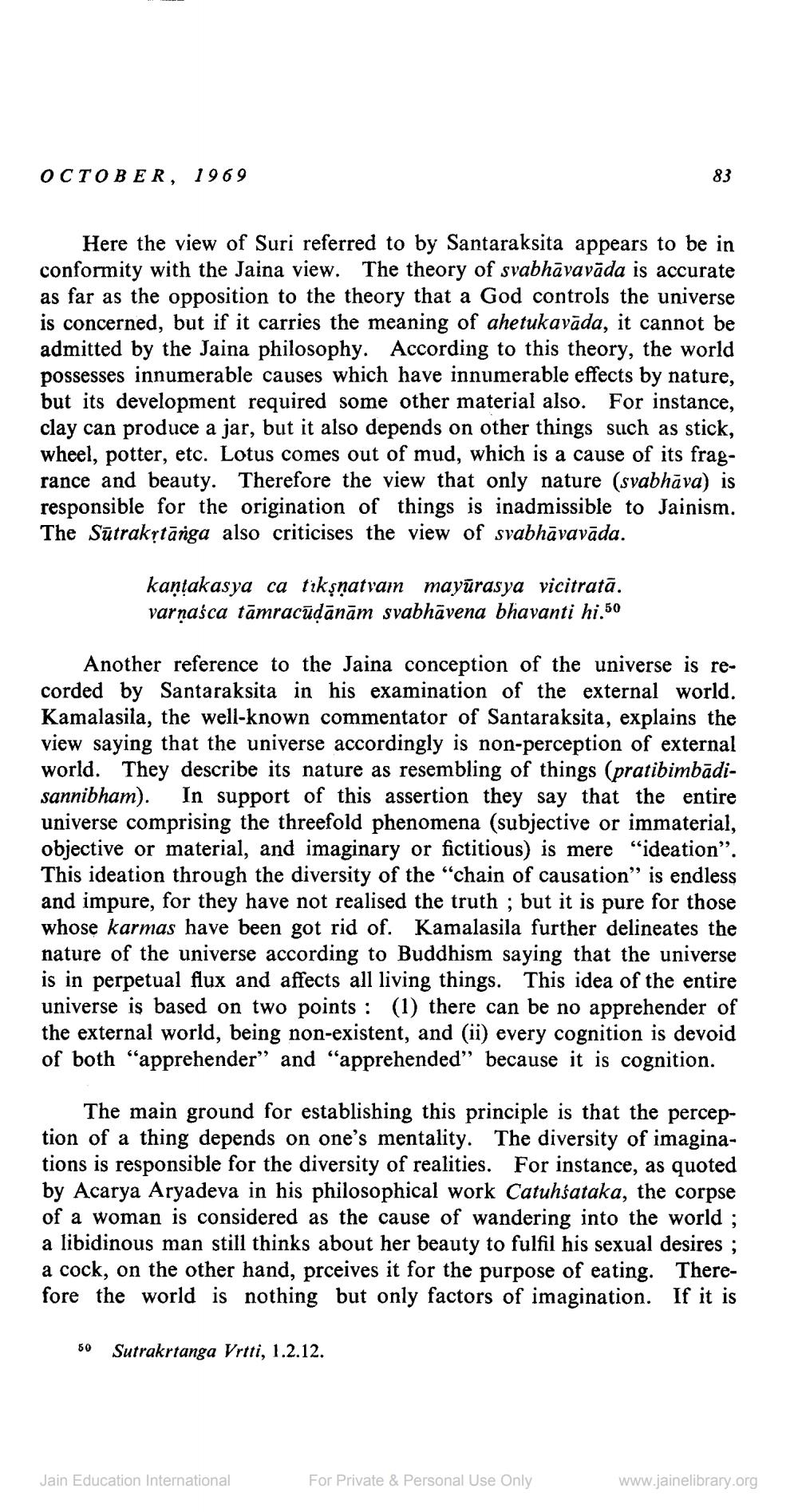________________
OCTOBER, 1969
Here the view of Suri referred to by Santaraksita appears to be in conformity with the Jaina view. The theory of svabhāvavāda is accurate as far as the opposition to the theory that a God controls the universe is concerned, but if it carries the meaning of ahetukavāda, it cannot be admitted by the Jaina philosophy. According to this theory, the world possesses innumerable causes which have innumerable effects by nature, but its development required some other material also. For instance, clay can produce a jar, but it also depends on other things such as stick, wheel, potter, etc. Lotus comes out of mud, which is a cause of its fragrance and beauty. Therefore the view that only nature (svabhāva) is responsible for the origination of things is inadmissible to Jainism. The Sutrakṛtānga also criticises the view of svabhāvavāda.
kaṇṭakasya ca tikṣṇatvam mayūrasya vicitratā. varṇaśca tāmracūḍānām svabhāvena bhavanti hi.50
Another reference to the Jaina conception of the universe is recorded by Santaraksita in his examination of the external world. Kamalasila, the well-known commentator of Santaraksita, explains the view saying that the universe accordingly is non-perception of external world. They describe its nature as resembling of things (pratibimbādisannibham). In support of this assertion they say that the entire universe comprising the threefold phenomena (subjective or immaterial, objective or material, and imaginary or fictitious) is mere "ideation". This ideation through the diversity of the "chain of causation" is endless and impure, for they have not realised the truth; but it is pure for those whose karmas have been got rid of. Kamalasila further delineates the nature of the universe according to Buddhism saying that the universe is in perpetual flux and affects all living things. This idea of the entire universe is based on two points: (1) there can be no apprehender of the external world, being non-existent, and (ii) every cognition is devoid of both "apprehender" and "apprehended" because it is cognition.
83
The main ground for establishing this principle is that the perception of a thing depends on one's mentality. The diversity of imaginations is responsible for the diversity of realities. For instance, as quoted by Acarya Aryadeva in his philosophical work Catuhsataka, the corpse of a woman is considered as the cause of wandering into the world; a libidinous man still thinks about her beauty to fulfil his sexual desires; a cock, on the other hand, prceives it for the purpose of eating. Therefore the world is nothing but only factors of imagination. If it is
50 Sutrakrtanga Vrtti, 1.2.12.
Jain Education International
For Private & Personal Use Only
www.jainelibrary.org




